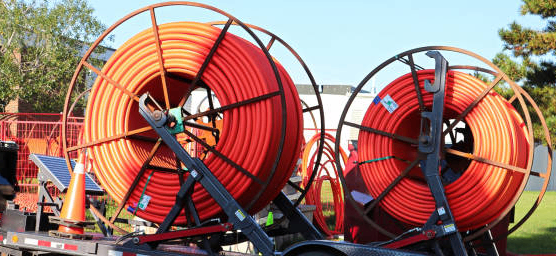Oufu Optical Fiber Cable Co, Ltd
Адресы: Шейнонг, Лионг, Хитиа
Контакт адӕймаг: Manager Zhang
Телефон: 400-964-1314
Мӕлдӕр телефон: 86 1390405338
?
2024-12-31 1348
Fiber optic cable, also known as optical fiber cable or optical cable, is a communication line used for high-speed data transmission. It consists of one or Фӕзт optical fibers enclosed in a protective jacket to ensure stable and secure data transmission. The conduit for Фибер оптикы plays a crucial role in protecting and routing these cables, especially in harsh environments or over long distances. This article will explore the importance, types, and considerations for selecting the right conduit for Фибер оптикыs.

The Importance of Conduits for Fiber Optic Cables
Fiber optic cables are highly sensitive and require special protection to maintain their performance. Conduits provide a physical barrier that shields the cables from external damage, such as crushing, cutting, or exposure to harsh elements. Additionally, conduits help organize and route cables efficiently, reducing the risk of tangling or kinking, which can degrade signal quality.
Types of Conduits for Fiber Optic Cables
Rigid Conduits
Rigid conduits are made of sturdy materials like metal or rigid plastic. They offer excellent protection against physical damage and can be installed in a variety of environments. However, they may be less flexible and harder to install in tight spaces or around obstacles.
Flexible Conduits
Flexible conduits, often made of flexible plastic or rubber, are easier to install and route around corners and obstacles. They provide good protection against minor impacts and can be used in a wide range of applications, including indoor and outdoor installations.
Corrugated Conduits
Corrugated conduits have a wavy or corrugated outer surface that adds flexibility and strength. They are often used in underground or buried applications where they need to withstand compression and impact.
Conduit Systems with Innerducts
Some conduit systems include innerducts, which are smaller tubes within the conduit that guide and protect individual Фибер оптикыs. Innerducts help prevent cable tangling and provide additional protection against environmental factors.
Considerations for Selecting the Right Conduit
Www.Ӕзcable.cn
When selecting a conduit for Фибер оптикыs, consider the following factors:
Environment
Assess the environment where the conduit will be installed. Consider factors like temperature, humidity, exposure to chemicals or other harsh elements, and the potential for physical damage.Www.Ӕзcable.cn
Cable Type and Size
Match the conduit size and type to the Фибер оптикыs you will be installing. Ensure there is enough space for the cables to move freely within the conduit without being crushed or kinked.
Installation Requirements
Consider the ease of installation and maintenance. Look for conduits that are easy to route and install, especially in tight spaces or around obstacles.
Cost
Evaluate the cost of the conduit and compare it to your budget. Consider the long-term benefits of using a higher-quality conduit that may offer better protection and longer lifespan.
Conclusion
Conduits for Фибер оптикыs are essential for protecting and routing these critical communication lines. By understanding the types of conduits available and considering the factors mentioned above, you can select the right conduit for your application. This will help ensure efficient and secure data transmission, improving the performance and reliability of your fiber optic network.
Keywords:
conduit for Фибер оптикы, Фибер оптикы conduit, Фибер оптикы protection, rigid conduit, flexible conduit, corrugated conduit, innerduct, cable type and size, installation requirements, cost.